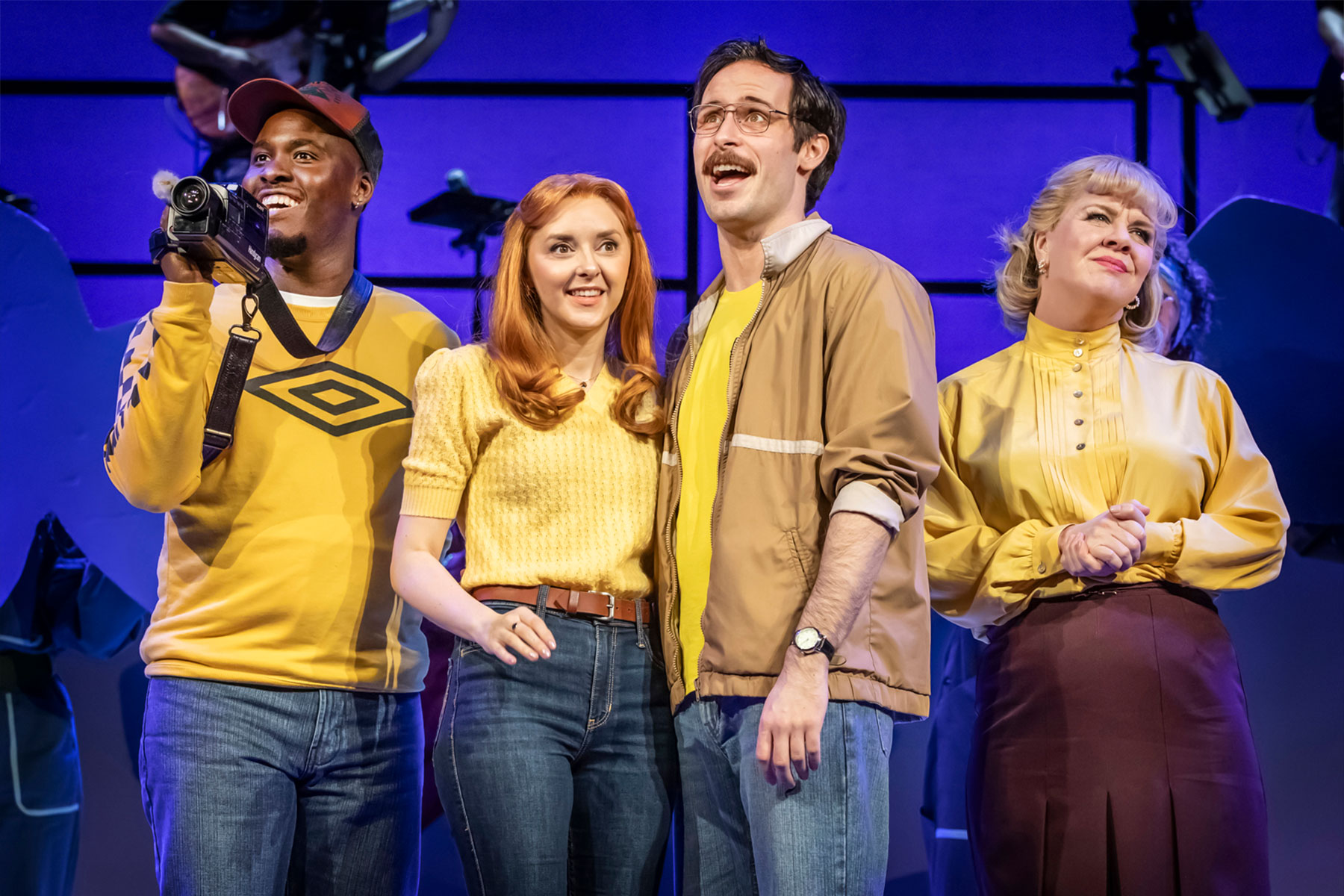A History of Everything (Plymouth)
The controversial young Belgian theatre company Ontroerend Goed returns to the UK with another startling, thought-provoking piece.
An international collaboration between the company, Sydney Theatre Company, Drum Theatre Plymouth, Richard Jordan Production Ltd, and Stadsschouwburg Amsterdam, director Alexander Devriendt and performer Joeri Smet’s A History of Everything is a charming 90-minute lesson in world history and evolution. Backwards.
Opening with an up-to-the-minute broadcast of news of the day, the projected date starts to countdown to the inevitable Big Bang (or whimper).
And meanwhile the seven versatile performers flow across the map of the world displayed on the stage floor marking the changing war zones, iconic and trivial moments in time, noteworthy dates of importance to the consumer world – ipads, iphones, ipods, McDonalds, Nike, Dow Jones, the combustion engine, Boston Tea Party et al, and dates salient to the individuals – birthdays, when the rucksack was abandoned for a briefcase at school, the year forbearers emigrated.
History’s notables are (nearly all) here: Pol Pot, Ghengis Khan, Lincoln, Charlie Chaplin, Thatcher, Nixon, Queen Elizabeth II, Hitler, Kennedy, Marilyn Monroe, Napoleon, Ghandi and Jesus, to name but a few, have their moments in a breathless montage of hats, flags and those ubiquitous war markers.
Tsunamis are depicted with water sprays, nuclear explosions with cotton wool and confetti illustrates Ice Ages.
Bottecelli’s Birth of Venus is a beautiful pause in the tumult of images and cacophony of snippets of well-known speeches while sober or funny monologues break up the riot of information. Crosses abound in a frenzy of religion-fuelled killings and conquering while, for me, the portrayal of Europeans scrabbling over Africa packed one hell of a punch.
As the population shrinks, so the Americas and Australia are undiscovered, the Ancient Egyptians dismantle the pyramids, the wheel is un-invented and the continents merge back into one large land mass.
Tahki Saul’s swiftly changing chalk drawings (difficult to see for most of the audience) and black-clad performers cleverly utilising hoodies illustrate the return to amoebic cells and man’s insignificance in the scheme of things.
Finally Sophie De Somere’s beautifully simple cloth map is bundled into a reflective lump of rock glimmering in the void with Lilith Tremmery’s haunting lighting evocative of the timelessness and magnificence of space.
A must-see.










